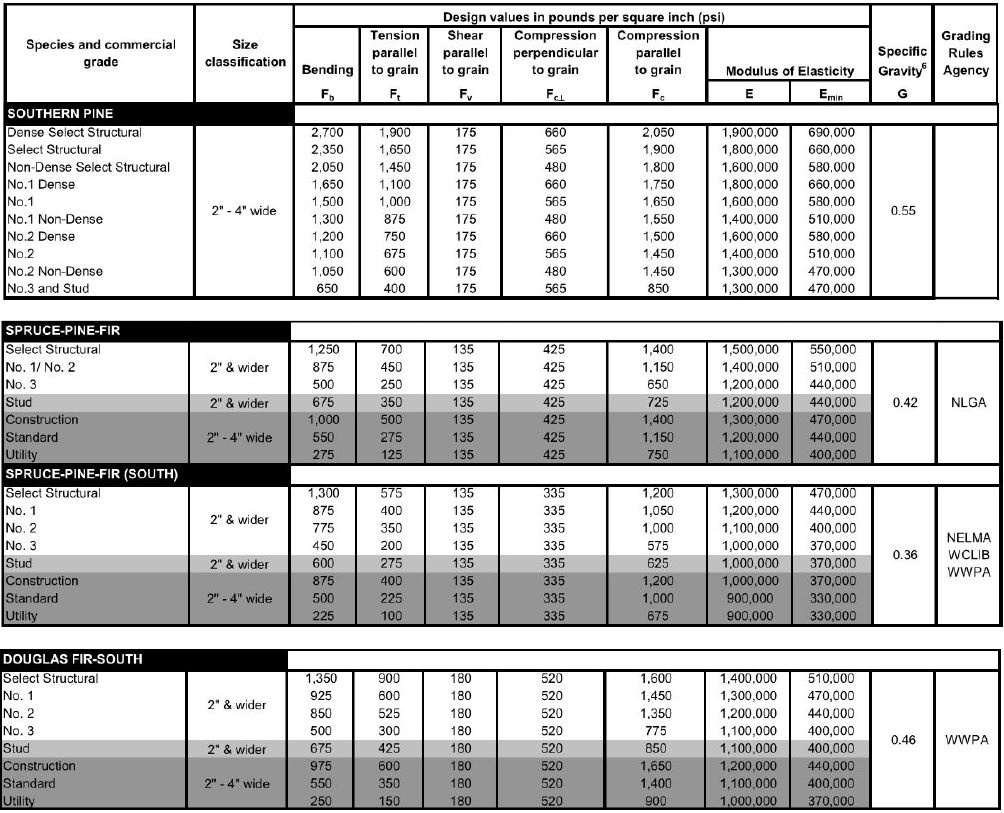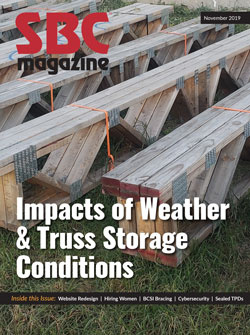Do Your Installers Understand “Stress-Graded” Lumber?
Do Your Installers Understand “Stress-Graded” Lumber?

For anyone who has paid close attention to BCSI, specifically the B2 Summary Sheet, then you’ll notice lumber used for temporary bracing is required to be “stress-graded.” But in this context, what does stress-graded lumber really mean, and what happens if you get a call from a contractor explaining that they don’t have stress-graded lumber readily available? We’ll answer these questions, and more, as we walk through lumber grading as it pertains to lumber available for bracing.
It may come as a surprise there are a variety of lumber grades, most of which component manufacturers (CMs) never come into contact with. The lumber that CMs typically work with is either visually graded or machine graded lumber. Additionally, there are appearance grades for lumber used in furniture and hardwood grades for hardwood lumber. Again, these lumber grades are not typical to CMs.
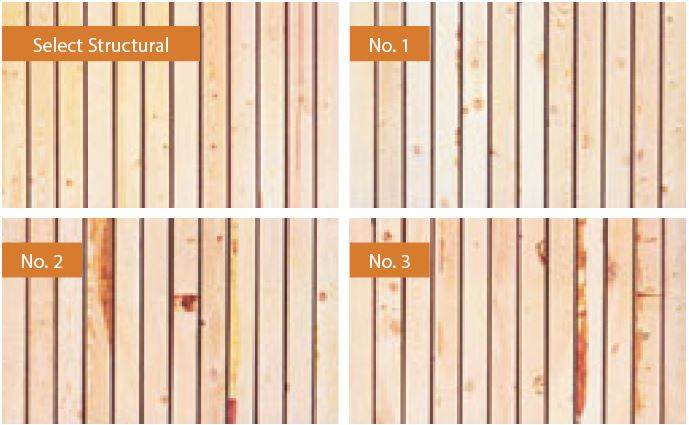
Visually graded lumber is inspected for visual characteristics such as knots, wane, slope of grain, etc. The assignment of a grade, such as Select Structural, No. 1, No. 2, No. 3, etc. is done through the use of grading rules.
Grade Rules Writing Organizations
The accredited agencies in the lumber program operate under one or more of the following six sets of grading rules and are available from the publishing agency. Please contact them for information concerning their respective rules.
1. Standard Grading Rules for Northeastern Lumber; published by the Northeast Lumber Manufacturers Association (NeLMA), 272 Tuttle Road, P.O. Box 87A, Cumberland Center, ME 04021; 207.829.6901; 207.829.4293 (fax); e-mail info@nelma.org
2. Standard Specifications for Grades of California Redwood Lumber; published by the Redwood Inspection Service (RIS), 1500 SW First Avenue, Portland Oregon 97204-2122; 503.224.3930; 503.224.3934 (fax); e-mail info@wwpa.org
3. Standard Grading Rules for Southern Pine; published by the Southern Pine Inspection Bureau (SPIB), 4555 Spanish Trail, Pensacola, FL 32504; 850.434.2611; 850.434.1290 (fax); e-mail spib@spib.org
4. Standard Grading Rules for West Coast Lumber; published by the Pacific Lumber Inspection Bureau (PLIB/WCLIB); 909 South 336th Street, Suite 203, Federal Way, WA 98003; 253.835.3344; 253.835.3371 (fax); e-mail info@plib.org
5. Western Lumber Grading Rules; published by Western Wood Products Association (WWPA); 1500 SW First Avenue, Portland Oregon 97204-2122; 503.224.3930; 503.224.3934 (fax); e-mail info@wwpa.org
6. Standard Grading Rules for Canadian Lumber; published by the National Lumber Grades Authority (NLGA); Suite 303 - 409 Granville St., Vancouver, BC V6C 1T2; 604.673.9100; 604.673.9141; e-mail info@nlga.org
The higher the grade, the higher the strength properties of the piece of lumber. These tables show the strength properties assigned to different grades of lumber. Visually graded lumber is third party inspected by 25 agencies, such as Southern Pine Inspection Bureau, Timber Products Inspection, and Western Wood Products Association to name a few.
Machine stress rated lumber is graded in a very different way. Instead of relying on the visual characteristics of the lumber, machine stress rated (MSR) lumber is run through a non-destructive test machine that gives the piece of lumber the bending capacity (fb) and the modulus of elasticity (E). Examples of graded lumber and their properties can be seen in the tables below. MSR lumber must also meet certain visual requirements before the grade stamp can be applied. MSR lumber, using a separate ALSC policy, is also governed by the same grading rule and third party inspection process as visually graded lumber.
Tables above are taken from Table 4A of the 2017 edition of the National Design Specification (NDS) Design Values for Wood Construction Supplement showing the reference strength values for various visual grades of lumber. Click to enlarge.
The table above is taken from Table 4C of the 2017 edition of the National Design Specification (NDS) Design Values for Wood Construction Supplement showing the reference strength values for various machine stress rated lumber grades. Click to enlarge.
Lumber grading, whether it is done visually or with a machine, is a tool to better understand the amount of stress that a board is capable of withstanding. This means that as long as lumber has a grade stamp, it can be cross-referenced with the National Design Specification (NDS) for Wood Construction to determine the stress properties for that piece of lumber.
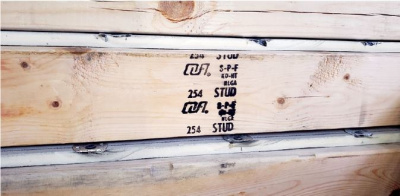
Our goal with this information is to help you answer contractor questions about not having stress-graded lumber on site. Most, if not all, construction sites have at least 2x4 stud grade available at the jobsite. Stud grade lumber can be used for temporary bracing if that is what is readily available, because this lumber has undergone a grading procedure and certain stress properties have been assigned to it.
Given that the question was asked if a special purchase needs to be done, the answer is that it is not required that a crew order #2 or #1 visually graded lumber to brace trusses. BCSI states the following:
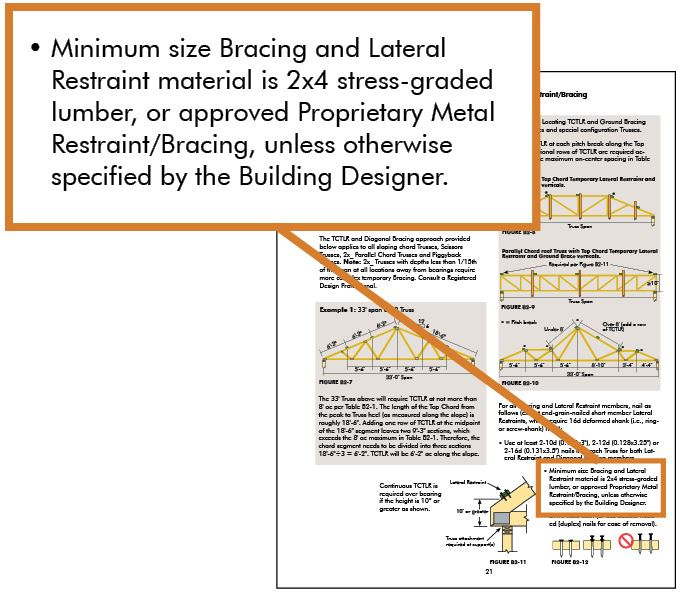
In conclusion, determining which lumber meets the stress-grading requirements is easier than one may think. If the designer has specified a bracing plan, it should be closely followed to maintain the structural integrity of the system. If there is no lumber requirement specified by a bracing plan, then any of the construction 2x4 lumber typically found on a jobsite is sufficient as long as it has been through the approved grading process and assigned a grade.

